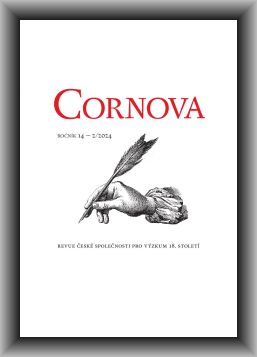Sixtus Bolom-Kotari a kol.: Zrozeni z osvícenských reforem: toleranční kazatelé z Uher v procesu formování české společnosti (1781–1870)
Sixtus Bolom-Kotari a kol.: Born of Enlightenment Reforms: Tolerant Preachers from Hungary in the Process of Forming Czech Society (1781–1870)
Author(s): Daniela TinkováSubject(s): Cultural history, History of ideas, Local History / Microhistory, Social history, 18th Century, Cultural Essay
Published by: AV ČR - Akademie věd České republiky - Ústav pro českou literaturu
Keywords: cultural transfer; Enlightenment in Bohemia; 18th-century Leipzig; 18th-century Saxony;
Summary/Abstract: Review of: Bolom-Kotari, Sixtus a kol. Zrozeni z osvícenských reforem: toleranční kazatelé z Uher v procesu formování české společnosti (1781-1870). First edition. Praha: NLN, 2023. 449 pages. ISBN 978-80-7422-897-1. This contribution explores the hypothesis that 18th-century Bohemia, which was effectively a political and informational periphery directed from Vienna, also functioned – thanks to its geographical position and other factors and despite unfavourable circumstances – as a kind of “information membrane”. In particular, this study explores the forms of cultural transfer between Bohemia (Prague) and its neighbouring Protestant regions in Germany, especially Saxony. In the late 18th18th century, religiously tolerant Saxony, with its educated court in Dresden, book fair, and university in Leipzig, functioned as a sui generis centre of Enlightenment in Central Europe. Moreover, it was where the canon of new literary and scientific German was taking shape. Saxony also mediated the transfer of new cultural models (and printed materials) from Great Britain and France to the German-speaking environment of Central Europe. Its peripheral position close to the border enabled a lively cultural transfer with neighbouring Bohemia, and active exchange of information. I believe this was one of the key factors that drove an accelerated “dynamics of Enlightenment” in the Czech environment during the last third of the 18th18th century. Contacts with the originally Lutheran Saxony were facilitated also by the Catholic conversion of Augustus the Strong, Elector of Saxony, in 1697, which reinforced a symbiosis between the now Catholic court in Dresden and Lutheran university in Leipzig. I chose the historical region of Bohemia to illustrate the relationship between centre and periphery, and as a basis for discussing peripheries that can become centres. After all, many other examples can be found of a periphery that neighbours on an area which may serve to relativize its apparent marginality. The first part of the study is dedicated to more general observations about cultural transfer, especially in relation to the Enlightenment and the dichotomy of centre vs periphery. The second part focuses more concretely on relations between the Czech Lands and German Protestant regions, with emphasis on culture transfer between Bohemia (particularly Prague) and Saxony, (Leipzig and Dresden). This cultural exchange is presented using examples mainly from science, literature, and the book market.
Journal: Cornova
- Issue Year: 14/2024
- Issue No: 2
- Page Range: 104-107
- Page Count: 4
- Language: Czech

